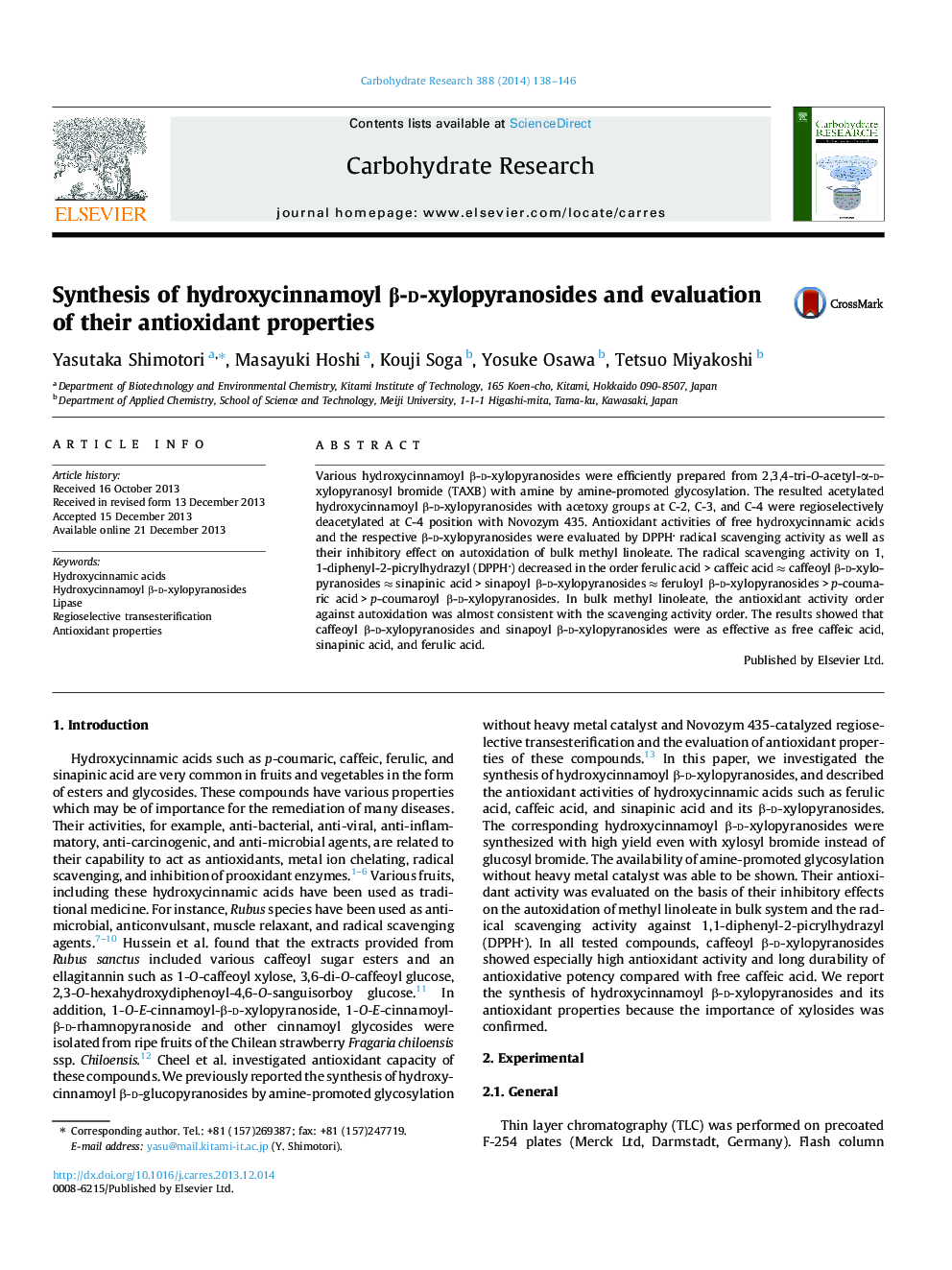| Article ID | Journal | Published Year | Pages | File Type |
|---|---|---|---|---|
| 1387896 | Carbohydrate Research | 2014 | 9 Pages |
•Hydroxycinnamoyl β-d-xylopyranosides were synthesized by amine-promoted glycosylation.•Regioselective deacetylation of C-4 position was successfully achieved using Novozym 435 as lipase.•Antioxidant properties of hydroxycinnamic acids and their xylopyranosides were evaluated by two methods.•Hydroxycinnamoyl β-d-xylopyranosides were effective antioxidant on DPPH radical scavenging and autoxidation of bulk oil.
Various hydroxycinnamoyl β-d-xylopyranosides were efficiently prepared from 2,3,4-tri-O-acetyl-α-d-xylopyranosyl bromide (TAXB) with amine by amine-promoted glycosylation. The resulted acetylated hydroxycinnamoyl β-d-xylopyranosides with acetoxy groups at C-2, C-3, and C-4 were regioselectively deacetylated at C-4 position with Novozym 435. Antioxidant activities of free hydroxycinnamic acids and the respective β-d-xylopyranosides were evaluated by DPPH radical scavenging activity as well as their inhibitory effect on autoxidation of bulk methyl linoleate. The radical scavenging activity on 1,1-diphenyl-2-picrylhydrazyl (DPPH) decreased in the order ferulic acid > caffeic acid ≈ caffeoyl β-d-xylopyranosides ≈ sinapinic acid > sinapoyl β-d-xylopyranosides ≈ feruloyl β-d-xylopyranosides > p-coumaric acid > p-coumaroyl β-d-xylopyranosides. In bulk methyl linoleate, the antioxidant activity order against autoxidation was almost consistent with the scavenging activity order. The results showed that caffeoyl β-d-xylopyranosides and sinapoyl β-d-xylopyranosides were as effective as free caffeic acid, sinapinic acid, and ferulic acid.
Graphical abstractFigure optionsDownload full-size imageDownload as PowerPoint slide
